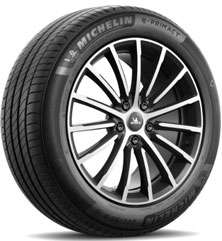A founding partner of the world’s first all-electric single-seater racing series and an investor in the ambitious project from the outset in 2013, French tyre maker Michelin says it is poised to withdraw from the ABB FIA Formula E World Championship at the end of the 2021/2022 campaign. The final race in season eight marked the end of the Gen 2 era in Formula E and the departure of Michelin as the sport’s sole tyre supplier. South Korean tyre maker Hankook will replace Michelin as the Gen3 tyre partner in the 2022/23 season.
Michelin adds that its work over the years “in close collaboration with the championship’s organisers, teams and constructors, and the FIA (Fédération International de l’Automobile) has made a concrete contribution to the success enjoyed by Formula E today”.
Michelin says it has used its research capacity and experience of motorsport to innovate and sign-off technological advances across the wide spectrum of conditions that have been encountered in the course of the competition’s eight seasons to date. Given that races are held at street circuits that are open to normal traffic the rest of the time, these conditions can, in many ways, be compared directly with those ordinary motorists face every day.
The progress Michelin has made through its involvement in Formula E covers three main phases:
- 2014: Michelin invents the first tyre for world-class electric single-seater racing
From the outset, the original Michelin Pilot Sport EV racing tyre, like road tyres, featured a patterned tread when it was revealed along with Formula E’s first all-electric single-seater. The decision to propose a solution for street circuits that resembled an everyday tyre – in contrast to pattern-less “slicks” – was based on a clear technological vision.
Michelin chose to push the envelope in terms of versatility and longevity and thereby reduce the number of tyres that needed to be made for each e-prix (one set per car per race).
While delivering the performance-related qualities expected of a tyre engineered to equip a racing car capable of accelerating from standstill to 100kph in less than three seconds (similar to a Formula 1 car), this similarity to a road tyre also enabled Michelin to sign-off innovations in racing and carry them over to road-going ranges in record time.
Indeed, in 2015, just a year after the introduction of its first-generation solution for Formula E, the French brand launched the Michelin Pilot Sport 4 which featured a tread pattern identical to that of its racing counterpart. This extremely short lead-time from concept to production represented a first in the field of technology transfer.
- 2016: An additional race lap thanks to enhanced energy efficiency
Eager to build on the Michelin Pilot Sport EV’s initial success, Michelin turned its attention to reducing its rolling resistance, a factor that has a significant influence on the range of any vehicle, and an area of particular importance in the case of electric cars.
After two years of R&D, the Michelin Pilot Sport EV2 race tyre was launched ahead of the 2016/2017 FIA Formula E Championship and delivered a 16% gain in rolling resistance compared with its predecessor. This improvement was achieved with no detriment to the latter’s acclaimed performance.
- 2018: Four tyres weigh the same as three former-generation tyres
The 2018/2019 Formula E season saw the introduction of the championship’s new, so-called Gen2 single-seaters. To equip these entirely-revisited, more powerful, faster cars which boasted even longer range, Michelin’s engineers continued to push the boundaries, with a particular focus on the third-generation Michelin Pilot Sport EV’s mass.
With each tyre tipping the scales as much as 2.5 kg less than the former version, the total weight saving amounted to practically 10 kg per set of four, the equivalent of a single front tyre!
This appreciable improvement was not only significant, because it meant less weight needed to be transported to and from races, but it also resulted in fewer raw materials having to be recycled.
At the 2019 Marrakech E-Prix, second round of the 2018/2019 FIA Formula E Championship, the new cars were a whole three seconds a lap faster than they had been in comparable conditions at the previous season’s visit to Morocco.
Matthieu Bonardel (Director, Michelin Motorsport) said, “Motorsport enables the group to innovate, test new ideas, learn and transmit the expertise it gains, while at the same time evaluating new technologies in extreme conditions in record time. Michelin’s involvement in motorsport enables it to acquire specific skills and expertise that only high-level sport can provide, in association with exacting manufacturers and partners who face identical challenges.”
Michelin adds it may be about to withdraw from Formula E, but it continues to see motorsport as an exceptional laboratory.
Over the last two seasons, for example, it has increased the average proportion of sustainable materials that go into the production of its tyres for motorcycle racing’s FIM MotoE World Cup to 40%.
Meanwhile, Michelin is working on the MissionH24 project which is paving the way for hydrogen fuel-cell electric prototypes to compete in the Le Mans 24 from 2025. A new tyre for the programme containing 53% biosourced/recycled raw materials was recently revealed.
In association with Zuffenhausen, Michelin similarly equips the new, 1,000-plus horsepower Porsche 718 Cayman GT4 ePerformance with a tyre that comprises 53% sustainable materials. Porsche is already running this tyre for the model’s demo tour which included the recent Goodwood Festival of Speed in the UK.
By 2050, Michelin’s aim is to manufacture all the tyres it makes using sustainable materials alone, with an interim target of 40% by 2030.

